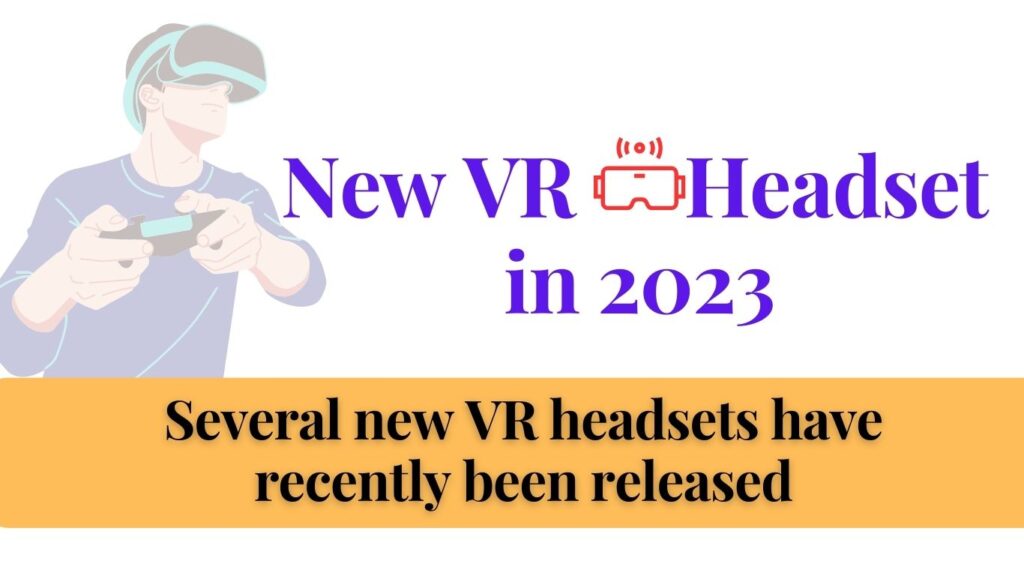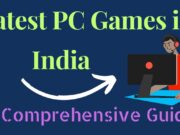Virtual Reality (VR) New VR headset are immersive devices that transport users to computer-generated worlds and environments.
They typically consist of a wearable VR headset that includes a display,
lenses, and motion sensors to track the user’s movements.
Several new VR headsets have recently been released, including:
- Oculus Quest 2: This is a standalone VR headset that was released in October 2020. It features a high-resolution display, wireless connectivity, and hand tracking technology.
- HTC Vive Pro 2: This is a high-end VR headset that was released in June 2021. It features a 5K resolution display, a 120Hz refresh rate, and compatibility with SteamVR.
- PlayStation VR 2: This is a next-generation VR headset that is expected to be released in late 2022. It will feature improved resolution and field of view, haptic feedback, and inside-out tracking.
- Varjo XR-3: This is a high-end VR headset that was released in January 2021. It features a 4K resolution display and mixed reality capabilities that allow users to seamlessly transition between the real world and virtual environments.

Newer VR headset models commonly include some features such as:
Higher resolution displays: Many newer VR headsets have upgraded displays that offer a higher resolution,
which can result in a more immersive experience with clearer and more detailed graphics.
Improved field of view: Some newer VR headsets have a wider field of view,
which can help create a more immersive and realistic environment.
Faster refresh rates: A higher refresh rate can help reduce motion sickness and provide a
smoother experience while moving around within the VR environment.
Eye-tracking technology: Some newer VR headsets have eye-tracking technology,
which can enable more natural interactions and provide a more immersive experience
by allowing the headset to respond to the user’s eye movements.
Wireless connectivity: Some newer VR headsets are designed to be used wirelessly,
which can provide greater flexibility and freedom of movement.
Improved tracking: Tracking technology is an essential aspect of VR, and newer headsets may offer improved tracking accuracy and responsiveness.
Comfort and ergonomics: Many newer VR headsets are designed with improved ergonomics
and comfort features, such as adjustable headbands, cushioned padding, and lightweight materials.
These are just some of the features that you might want to consider when looking at newer VR headset models. It’s important to research and compare different options to find a headset that meets your needs and budget.
I’m happy to help with any questions you may have about a new VR headset! Here are some common questions and answers:
Q: What are some good VR headsets on the market?
A: There are several high-quality VR headsets available, including the Oculus Quest 2,
the HTC Vive Pro 2, and the PlayStation VR. Each of these headsets offers different features and price points,
so it’s important to do your research and figure out which one will best suit your needs and budget.
Q: What are the main features to consider when buying a VR headset?
A: Some important features to consider when buying a VR headset include resolution, field of view,
refresh rate, tracking, comfort, and price.
You’ll want a headset with a high resolution and wide field of view to ensure an immersive experience,
as well as a fast refresh rate to prevent motion sickness.
Good tracking is also essential for accurate movement within the VR environment,
and a comfortable fit will allow you to wear the headset for extended periods of time.
Q: Can I use a VR headset with my computer?
A: Many VR headsets require a computer with a powerful graphics card to run,
such as the HTC Vive Pro 2 and the Valve Index.
However, some standalone headsets like the Oculus Quest 2 can be used without a computer.
It’s important to check the requirements of each headset before purchasing to make sure it’s compatible with your system.
Q: What types of games and applications can I use with a VR headset?
A: There are a wide variety of games and applications available for VR headsets,
including immersive experiences, simulations, and training programs. Many popular games,
such as Beat Saber and Half-Life: Alix, have VR versions available. Additionally,
VR can be used for educational and professional purposes,
such as medical training or architectural design.
Q: How do I set up a VR headset?
A: The setup process will depend on the specific headset you purchase,
but generally you’ll need to download software or apps,
connect the headset to your computer or gaming console,
and follow the instructions provided. It’s important to read the user manual and
follow all safety instructions to avoid injury or damage to the headset.
VR experience:
Virtual Reality (VR) technology has come a long way in recent years,
and trying out a new VR headset can be an exciting and immersive experience.
Here are some tips on how to get the most out of your first-time VR experience:
- Choose the right headset: There are many different types of VR headsets available, ranging from standalone devices to those that require a powerful PC to run. Make sure you choose a headset that is compatible with your system and fits comfortably on your head.
- Set up your space: Before you start using your VR headset, make sure you have a clear space to move around in. Avoiding tripping over any objects or bumping into walls is crucial while being immersed in the virtual world.
- Adjust the settings: Once you’ve put on the headset, adjust the settings to make sure you have the best possible experience. This may include adjusting the focus and IPD (interpupillary distance) to ensure the image is clear and comfortable.
- Start with a simple experience: If you’re new to using a VR headset, it’s recommended that you start with a simple experience to get accustomed to the technology. Many VR headsets come with built-in experiences that are designed to introduce you to the virtual world.
- Try different types of content: One can use VR technology for gaming, education, training, and much more.Try different types of content to see what you enjoy the most and to get a sense of the many possibilities of VR technology.
Overall, trying out a new VR headset can be a fun and exciting experience. Just remember to take it slow, adjust the settings, and have fun exploring the virtual world!






















